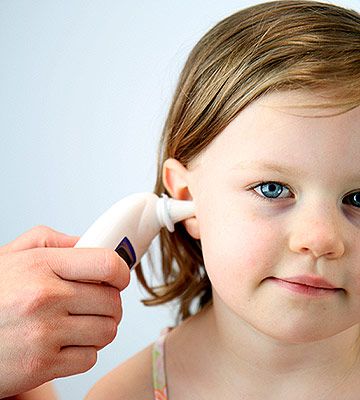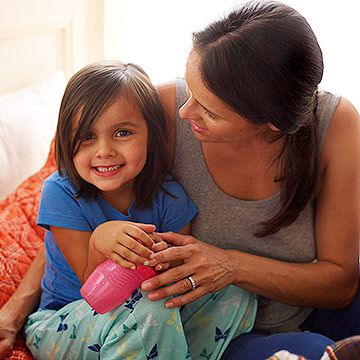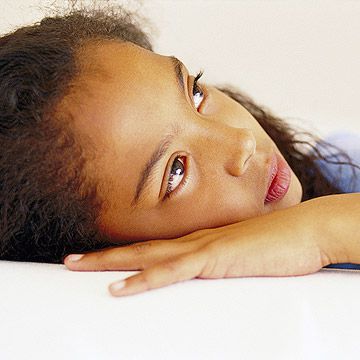Ears

Kids with colds often say their ears hurt, but this doesn't necessarily signal an ear infection. The inner ear may be making more fluid, like a runny nose, and a child just feels pressure. Babies may be fussy, have trouble sleeping, or tug at their ears. Your child may also have a fever.
Medical care: Call the doctor if your child seems uncomfortable, particularly if she has had previous infections. If she's over 2, try a wait-and-see approach before requesting antibiotics. The pediatrician can also prescribe anesthetic eardrops.
Help at home: Ibuprofen or acetaminophen can relieve her pain. A warm compress on her ear can be soothing too.
Eyes

Pinkeye, or conjunctivitis, is an inflammation of the eye's protective membrane. It's often caused by a cold virus but can also be caused by a bacterial infection. Your child's eye may have a watery or goopy discharge and be crusty in the morning.
Medical care: Check with your doctor. It's tough to rule out a bacterial infection, so she may prescribe antibiotic drops. Call right away if you see signs of infection in a child under age 2, or your child has swelling, pain, limited eye movement, or a change in vision.
Help at home: If her eyelids are stuck together, wipe them gently with gauze or cotton balls and warm water.
Throat

Cold viruses can cause a sore throat, but strep throat is caused by bacteria. Throat pain can be accompanied by fever, a stuffy nose, difficulty swallowing, red and white patches in the throat, and swollen tonsils or glands.
Medical care: Ask your doctor to perform a strep test when your child has a persistent sore throat, especially if he has other symptoms like difficulty swallowing. He'll need to take antibiotics if he tests positive.
Help at home: Soothe a mild or dry sore throat with warm or cold liquids, ice cream, Popsicles, or lollipops, which boost saliva production. Ibuprofen or acetaminophen can also be helpful.
Chest

Serious lung infections, such as pneumonia, bronchitis, or bronchiolitis, can be caused by either cold viruses or bacteria. Symptoms include hacking coughing fits, rapid breathing, wheezing, fever, chills, loss of appetite, vomiting, and chest pain.
Medical care: See your pediatrician right away. He may prescribe antibiotics if he suspects that your child has a bacterial infection.
Help at home: Be sure that your child gets plenty of rest and drinks a lot of fluids.
Sinuses

Bacterial sinusitis — an infection of the air-filled cavities around the nose and eyes — isn't very common in young kids. Warning signs: your child's cold isn't better in two weeks, fever, headache, facial pain, or dental pain. The color of her nasal mucus doesn't actually mean much — it often turns yellow or green even when there's no infection.
Bacterial sinusitis — an infection of the air-filled cavities around the nose and eyes — isn't very common in young kids. Warning signs: your child's cold isn't better in two weeks, fever, headache, facial pain, or dental pain. The color of her nasal mucus doesn't actually mean much — it often turns yellow or green even when there's no infection.
Help at home: OTC pain relievers or warm compresses may help ease her achiness.
Originally published in the November 2009 issue of Parents magazine.
